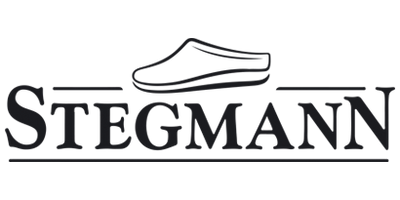About the Species Preservation Initiative
Did you know that there are around 1 billion sheep in the world, and more than 200 unique breeds? Even with all that diversity, Merino sheep make up over 50% of the wool producing sheep world wide. The popularity of Merino wool has led to consolidation amongst farmers, leaving many farmers of locally significant and rare heritage breeds at a financial disadvantage. In the case of many of the rarer sheep's wools there is simply such little demand that the breeds themselves have become endangered, their numbers dropping into the thousands. One such breed is Austria’s native Stonesheep (Tiroler Steinschaf), with its estimated Austrian population to be around 4,000 sheep, and 14,000 world wide. Learn more about our wool supply chain.
Our Species Preservation initiative is a joint effort between Stegmann Austria and Stegmann USA designed to support sheep breeders in Tirol and other parts of Europe who breed endangered sheep species. We use the wool of these rare species to create a unique shoe that uses only the uncolored fleece from these sheep, without dying or altering its natural beauty. By utilizing these uncommon wools for our production, we can help continue to safeguard and support the sustained breeding of these special sheep. The Eco Clog line was created to enable us to support these small farmers and rare sheep breeds. A note about Alpaca: while the Alpaca wool clog is included in the Eco Clog line, it is not part of our species preservation initiative.
The Tirolian Stonesheep
(Tiroler Steinschaf)
The Stonesheep is one of the oldest still existing sheep species on earth. Its origin lies in the Neolithic sheep, an archaic race. The sheep have been bred on remote mountain farms for centuries in Tirol for their meat, milk, and wool. Their wool was in high demand especially in the 20th century to produce loden cloth. Today, the Tirolean Stonesheep is a rare species. The estimated Austrian population is around 4,000 sheep, and 14,000 world wide. With our Tirolean Stonesheep Eco Clogs, we support the breeding and preservation of this species.
Characteristics: A very robust breed of sheep that is well adapted for the sparse conditions in the alpine mountains. Lives in alpine pastures, sometimes higher than 2,500m above sea level
Wool Characteristics: The undercoat is very dense and crinkled with fiber lengths of up to 15cm, while the upper wool grows up to 30cm. Due to its beautiful mottled look, it is used for traditional dresses and costumes and felt shoes. The felt is known for its uniqueness, depth of color and its resilience.
Our Featured Farmer: Josef Schnegg
Josef has been raising Stonesheep in Tirol, Austria for decades. He and his son Clemens breed and tend to the sheep year round, shearing them twice a year. He summers them in an alpine pasture, returning them each fall to spend the winter in a large grassy field near his home. Josef's family has lived in Tirol for generations, so breeding and raising their native Stonesheep is a point of pride. He has won many awards for his breeding program and wool quality over the years.
The Shetland Sheep
(Ovis Aries)
Shetland sheep are native to the Shetland Islands in Scotland. The race belongs to the Nordic heather sheep and has been recorded in history since the Stone Age. Shetland sheep are very robust and have adapted perfectly to the sparse and nutrient-poor soil.
Characteristics: The Shetland has adapted to be capable of walking long distances. They are small in stature, yet are a robust breed that is able to thrive in harsh conditions. Colors of Shetland sheep range from nearly white to dark brown.
Wool Characteristics: Wool colors can differ significantly between individuals. The wool of the Shetland Sheep is of superior quality. Once a year, in the springtime, the sheep shed their wool. At that time the wool can be easily loosened and detached without shearing but rather by picking it. The wool is very warming, smooth and elastic which guarantees a high wearing comfort. The natural coloring of the wool has approximately eleven main wool colors that go from white through honey brown to black.
The Swiss Juraschaf
(Schwarzbraunes Bergschaf)
Also known as the Swiss Mountain sheep, or Black-Brown Mountain sheep, the Juraschaf originated in the Alps of Switzerland and Austria in the 14th century. The species is popular in Switzerland and its wool is in high demand for its high quality, dark color and fine fiber structure. It is well known for its ability to thrive in tough alpine conditions.
Breed Characteristics:
The Juraschaf is a resilient and highly adaptable breed. They are a sturdy, medium sized sheep and are hardy against illness and harsh climate conditions. They are a well balanced, attractive sheep with a shiny head and thickly fleeced body. They are prized for their mono-chromatic black-brown wool.
Wool Characteristics:
Due to its consistent fleece color, Juraschaf wool is rarely dyed or colored. Raw wool ranges from dark brown to completely black. When blended, it produces a rich, deep espresso brown. Juraschaf wool is soft and fine, with all the wonderful natural insulating properties of alpine sheeps wool.
The Coburger Fox Sheep
A robust land sheep breed native to Germany. The speciality of this wool is its reddish-brown colour. When lambs are born, their color can be from goldish yellow to reddish brown, which can appear golden. Over the years it brightens up but it always keeps its reddish-brown or golden shimmer. There are currently only a few thousand Coburger sheep in existence.
A shoe with soul.
Every clog sold helps support small farms and heritage breeds.






